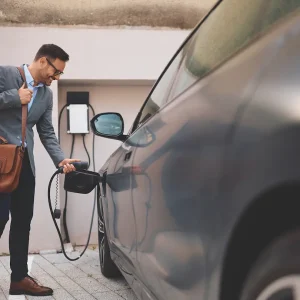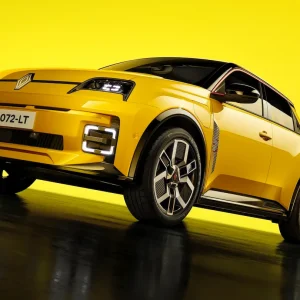While the start of a New Year is a good opportunity to reflect on the cars that have been released over the past 12 months, it’s also a great time to look ahead at what new cars manufacturers are going to be bringing out over the coming year.
Many have added SUVs into their line-up this year, and have also refined their electric and autonomous driving offerings to keep up with the increased consumer and fleet market demand. It’s been a busy year to say the least, and going forward into 2018, it looks like we should be expecting more of the same.
Here we’ve listed our top nine cars expected to be launched next year along with all the key information you need to know.
1. DS 7 Crossback

DS will enter the hotly contested SUV market with its DS7 Crossover, which it plans to launch in the UK in early 2018.
The SUV will go up against cars such as the Jaguar E-Pace and Audi Q3, and aims to set the bar high in terms of styling, comfort and technology for its sector.
The Crossback is available with a choice of petrol or diesel engines, and will offer the largest boot in its class, boasting a huge 555 litres.
Interestingly, DS is only allowing customers to view the vehicle before purchase via a VR experience that has been set up in DS Stores. There, they can use a headset to view the SUV in full-size 3D before ordering it from the dealership on
the website.
We were one of the first to get our hands on the car on its media launch in Paris recently, so click this link to read our full verdict.
2. Volvo XC40

Following in the successful footsteps of the XC90 and XC60, Volvo has recently completed its SUV line-up with the launch of its first compact premium SUV,
the XC40.
Set to compete against established vehicles in its sector, like the BMW X1 and Audi Q3, the SUV is expected to account for 40% of total Volvo sales.
The car is based on Volvo’s new CMA platform, which stands for ‘compact modular architecture’. It will allow the manufacturer to offer the car with not just traditional petrol and diesel engines, but hybrid and even pure electric powertrains. When it hits the road in 2018 though, there will only be combustion engines on offer and prices for the compact SUV will start from £27,905.
Click here to see what we thought of the car when we drove it in November for the first time.
3. BMW 3 Series
The BMW 3 Series has long been the benchmark compact executive saloon, not to mention a sales phenomenon, with 14 million cars sold since production began in 1975.
In 2018, we will see an evolution of the current model’s looks and a new mechanical platform, thought to make the car up to 100kg lighter than the
outgoing model.
We are told to expect an even sharper driving experience, due to the use of carbon fibre that offers increased structural stiffness, as well as reducing weight.
The new 3 Series is likely to debut in late 2018, but BMW are being very quiet about it for now and only a couple of details have been released to the industry. But what we do know is that the car will feature a range of three, four and six-cylinder engines, while hybrid and all-electric versions are also due later, adding even more significance to the increased electric trend we expect in 2018.
“It’s been a busy year to say the least, and going forward into 2018, it looks like we should be expecting more of the same.”
4. Jaguar I-Pace

Many manufacturers have been working to meet anticipated demand for electric vehicles, and 2018 will see the release of several high-profile models that aim to widen the appeal of battery-powered cars. One of which is the Jaguar I-Pace.
According to Jaguar, the 90kWh motor – which produces 400hp – should give the car a range of “more than 310 miles” on the current European testing cycle, similar to that of the Tesla Model X 90D, which can travel up to 303 miles between charges.
Jaguar says it should take two hours to fully recharge the I-Pace, based on the owner using a 50kW fast charger.
The interior of the five-seat concept car is a ‘clear statement of Jaguar’s plans for the production model’. The design is based around three display screens: a 12in primary interface located in the car’s instrument panel, a 5in infotainment system and a 12in screen that houses a head-up display and information for the driver.
5. Nissan Juke
It’s been a long time coming, and has had many rivals enter its segment since its last facelift in 2010, but the new and highly talked about Nissan Juke is set to launch next year.
Going up against key rivals in the subcompact SUV segment, such as the Fiat 500X, Honda HR-V and Mazda CX-3, the car will likely be based on Nissan’s new platform. Not many details have been released as yet, but it is said to feature body modifications, an improved interior and some powertrain changes, too. We assume it will also be available in several trim levels like the current model including SV, SL, Nismo and Nismo RS.
The car is expected to come in front-wheel and all-wheel drive guises, in a wide range of engines including a 1.0-litre three-cylinder turbo petrol and a 1.5-litre diesel engine seen elsewhere in the Nissan range, including the new Micra hatchback.
6. Ford Focus
It’s looking like 2018 will be a hugely significant year for Ford, as the firm is set to launch its all-important new Focus in 2018.
It has been in the top three biggest-selling cars in the UK for a number of years now, and is a significant player in the fleet market. But the outgoing model was criticised for being somewhat cramped for passengers and had one of the smallest boots in its class, so the new one is expected to significantly increase in size.
Details are thin on the ground, but design cues are expected to follow on from the new Ford Fiesta on the outside and inside, where there’ll be a more minimalist dashboard centred around a large infotainment screen.
The engine line-up will be based on Ford’s 1.0-litre turbocharged three-cylinder petrol engine known as EcoBoost, and at least three different power outputs are expected to be offered, starting at 99hp and reaching 138hp.
7. Audi Q3
Expected in the second half of the year, the second-generation Audi Q3 is anticipated to be more economical, with more space and a much more advanced dashboard, bringing kit like the ‘Virtual Cockpit’ digital instrument display to the SUV.
Design-wise, the front of the Audi Q3 will boast a redesigned grille, wider than the one on the model currently on sale. Fresh headlights will be offered, bringing this Audi in line with the front-end designs seen on the recently updated A5 and A8.
It will be based on the manufacturer’s new MQB chassis, which opens up a range of new engine possibilities for the Q3.
The future is also likely to bring a plug-in hybrid e-tron, but this is not expected until around a year after the Q3’s initial launch.
8. Mercedes C-Class
The latest Mercedes C-Class has been a hit, so it’s no surprise the carmaker is keen to give it a facelift to keep it competitive against rivals.
The biggest change will be the move away from the old 2.1-litre diesel to the cleaner, more refined 2.0-litre, which is already finding its way into newer Mercedes models.
It’s also expected that some new technology will filter down from the Mercedes E-Class when the updates arrive across the C-Class saloon, Coupe, Cabriolet and Estate range.
On the outside of the new C-Class, there will be LED headlights similar to those seen on the E-Class, as well as a revised bumper and a more sloping grille design.
Going up against the likes of the Audi A4 and BMW 3 Series is not a small task, but if the current-generation C-Class is anything to go by, we expect the new one to make some waves in the luxury sector, too.
9. Nissan Leaf

With all the latest tax changes and penalties to be introduced for diesel cars, it’s no surprise that electric cars have now been thrust into the limelight. And in terms of new cars next year, it doesn’t get more timely than the launch of the second-generation Nissan Leaf, the UK’s biggest-selling electric car.
Among the big news is the fact that the new car’s range has increased from 155 to 235 miles on a single charge, and adopts a new more ‘mainstream’ design to appeal to more people. The new Leaf will also allow drivers to accelerate, decelerate and brake using one pedal, and will come with autonomous driving technology when it goes on sale early in the spring.
A longer-range version with more power will arrive by the end of next year and, unlike the current model, the car’s batteries can be used as a mobile energy device that siphons spare power back to the national grid when the car is not being used at home, providing owners with an alternative income stream.





